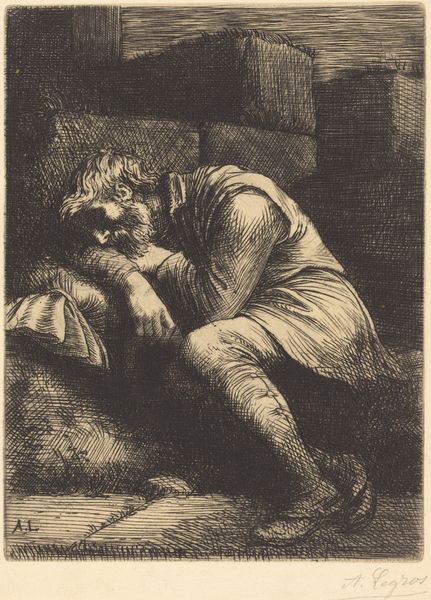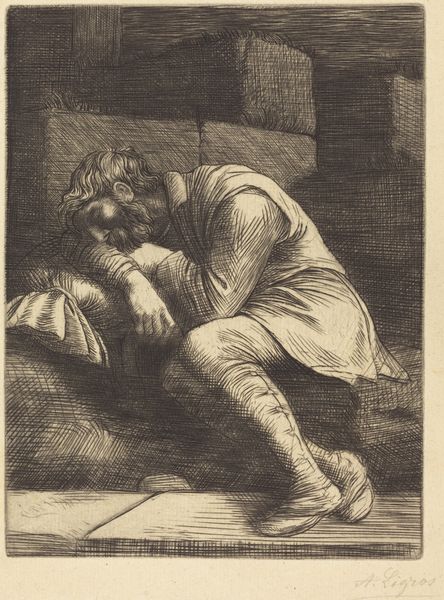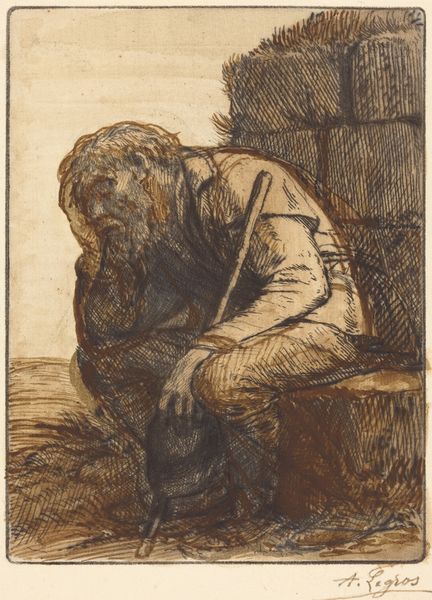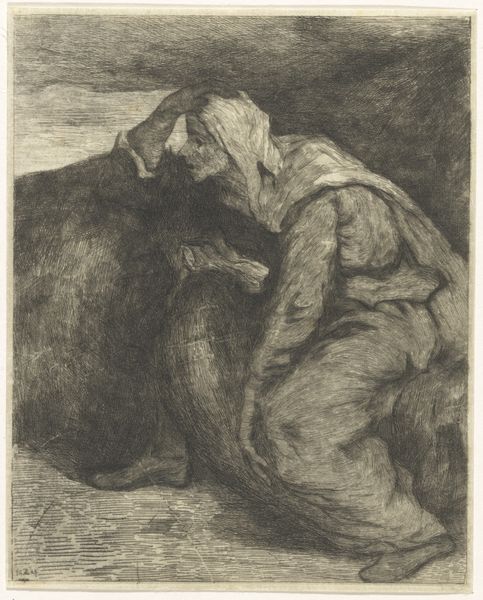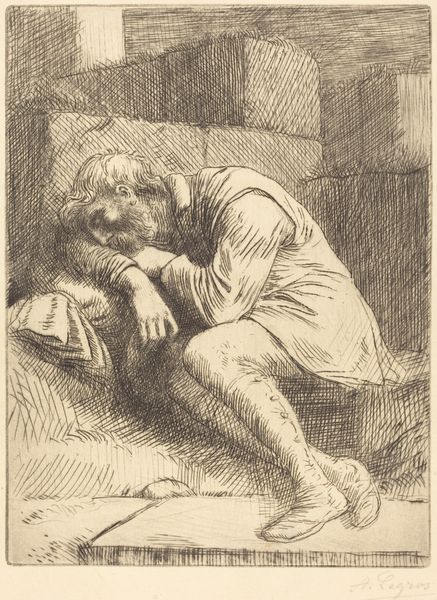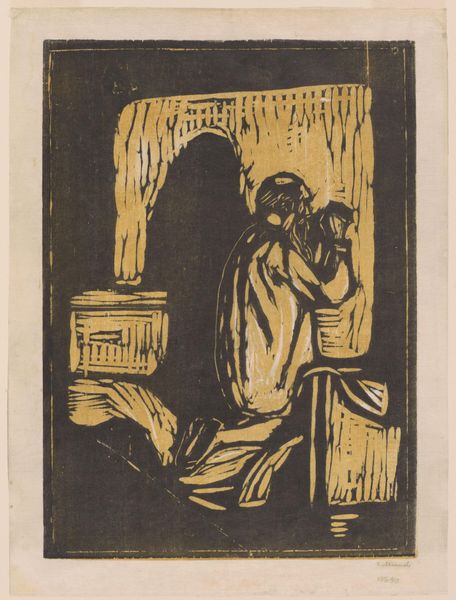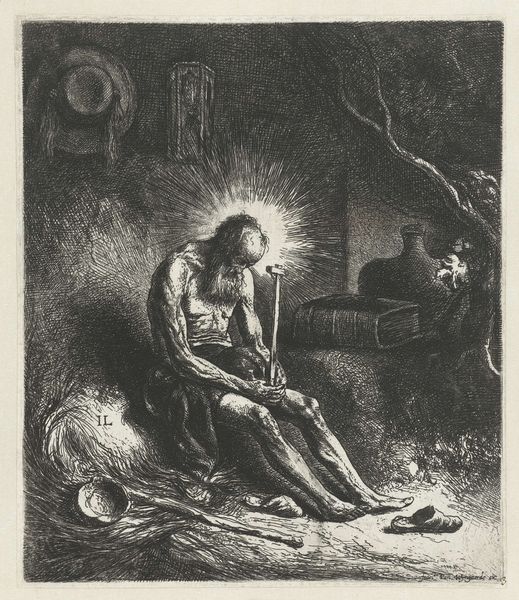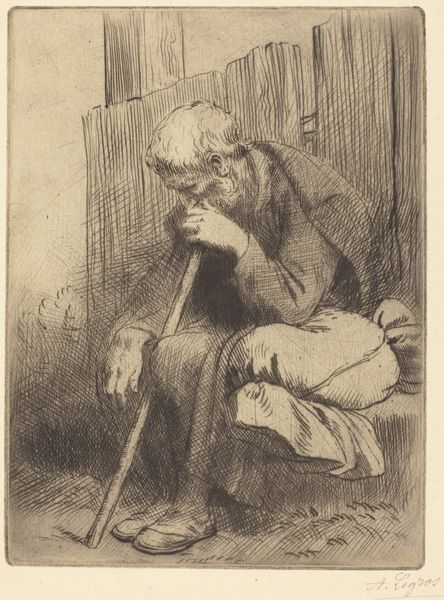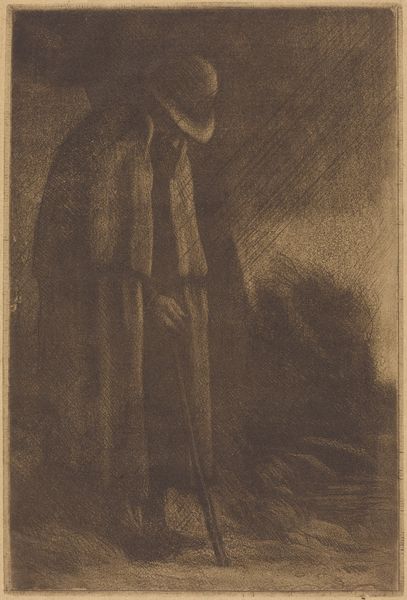
drawing, print, etching
#
portrait
#
drawing
# print
#
etching
#
history-painting
#
realism
Copyright: National Gallery of Art: CC0 1.0
Editor: This is Alphonse Legros’s “Thinker,” rendered as an etching. It's quite a somber image; the lines of the etching seem to emphasize the weight of thought, even burden. What speaks to you about this print? Curator: I'm drawn to the materiality of this work – the very labor involved in creating an etching. The lines aren’t spontaneous; each one required deliberate action. How does the process of etching—the acid, the metal plate, the press—influence our perception of "the thinker" and his labor? Editor: That’s interesting. I hadn’t considered the labor involved beyond the subject. Do you see this impacting the realism of the figure presented? Curator: Absolutely. Realism isn’t just about depicting a scene; it's about exposing the underlying economic and social forces. Legros presents not a heroic ideal, but a man engaged in a different kind of work -- intellectual. The "thinking" is itself a type of work being presented. Editor: So, you’re suggesting the print’s medium contributes to how we understand the act of thinking, of working, itself? It's less romantic, more about labor, even intellectual labor. Curator: Exactly. It blurs the lines between art and craft, between high and low labor. What is consumed and what is produced in that process? Editor: I'm beginning to see the etching not just as a representation, but as an artifact reflecting production of ideas and material. I'll definitely look at prints with a new perspective. Curator: Good, look at the materiality and you might get at the underlying currents and ideas present.
Comments
No comments
Be the first to comment and join the conversation on the ultimate creative platform.
